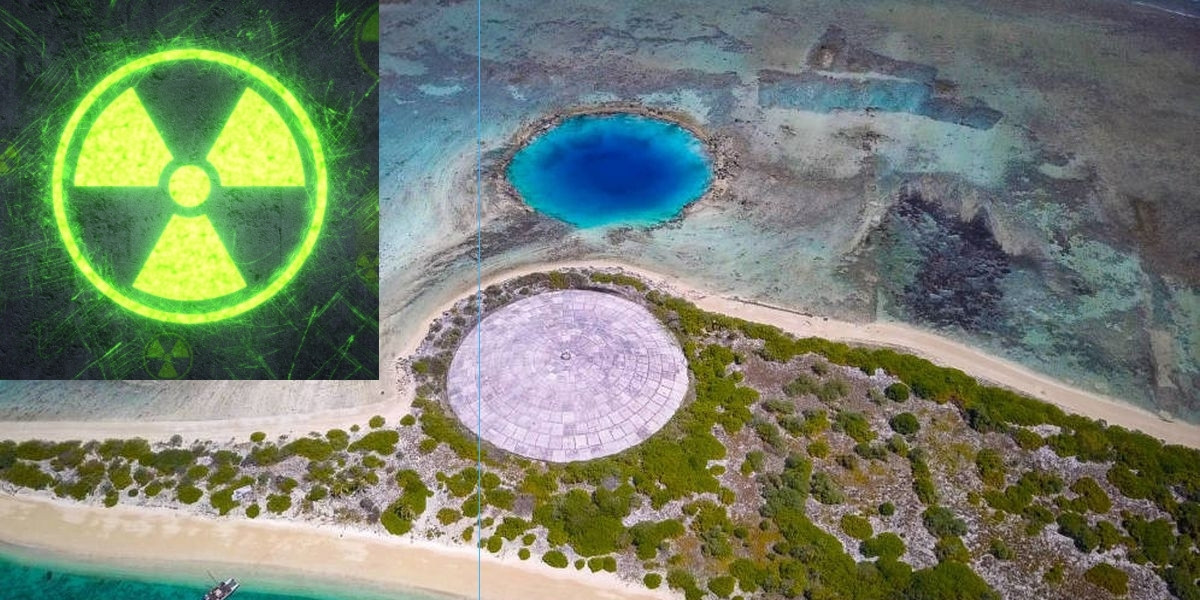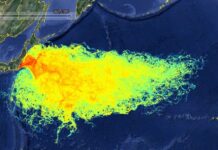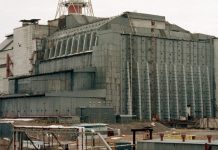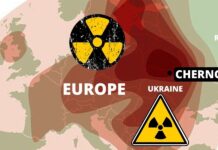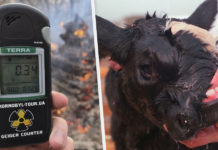For 12 years (from 1946 to 1958) during the Cold War, the United States carried out 67 nuclear weapons tests and put their radioactive waste under a dome-shaped bomb crater on Runit Island in Pacific’s remote Enewetak atoll in the Marshall Islands (a chain of islands and atolls located between Hawaii and Papua New Guinea).
Since the 18-inch thick 115-metre wide concrete dome —described by UN Secretary-General Antonio Guterres as “a kind of coffin”— was never lined by the US military, it is developing significant cracks after decades of exposure, could be leaking toxic radioactive waste (about 111,000 cubic yards of radioactive waste is buried in it) through the island’s porous coral rock into the Pacific Ocean, and could break apart if hit by a tropical storm.
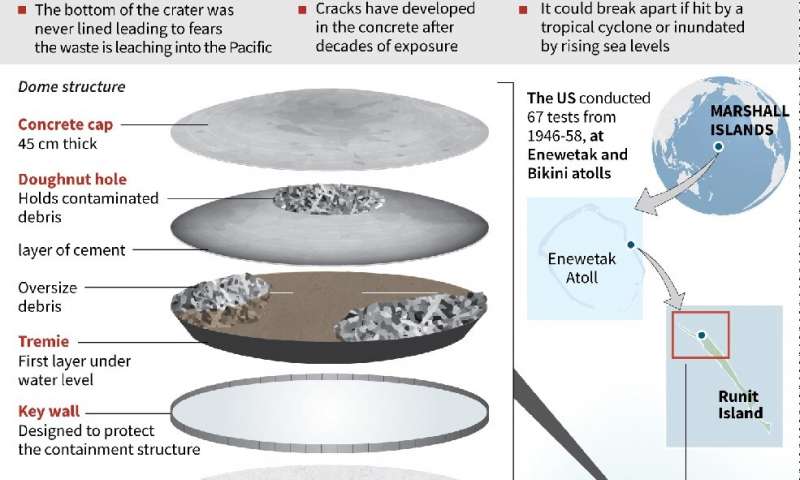
Guterres, who is on a recent tour of Pacific islands to discuss climate change, warned in Fiji:
“The consequences of these have been quite dramatic, in relation to health, in relation to the poisoning of waters in some areas. I’ve just been with the president of the Marshall Islands, who is very worried because there is a risk of leaking of radioactive materials that are contained in a kind of coffin in the area.”
A 2013 report by the U.S. Department of Energy admitted that radioactive waste had already begun to leak from the dome, which is dangerously vulnerable to both rising sea tides and typhoons. The soil around the structure was found to be more radioactive than the contents within. Today, a strong storm could breach the dome, releasing the deadly legacy of America’s nuclear might.
Jack Ading, who represents the area in the Marshalls’ parliament and calls the dome a monstrosity, fears that the Runit dome might eventually become their coffin:
“It is stuffed with radioactive contaminants that include plutonium-239, one of the most toxic substances known to man. The coffin is leaking its poison into the surrounding environment. And to make matters even worse, we’re told not to worry about this leakage because the radioactivity outside of the dome is at least as bad as the radioactivity inside of it.”
Scientists have been raising the alarm for years that rising sea levels caused by climate change or a big storm could threaten the structural integrity of the coffin and cause its collapse. Michael Gerrard, director of the Sabin Center for Climate Change Law at Columbia University, told The Guardian in 2015:
“Runit Dome represents a tragic confluence of nuclear testing and climate change. It resulted from U.S. nuclear testing and the leaving behind of large quantities of plutonium. Now it has been gradually submerged as result of sea level rise from greenhouse gas emissions by industrial countries led by the United States.”
A Cold War-era concrete “coffin” is leaking radioactive material into the Pacific Ocean, said a UN official.
The Marshall Islands dome was a dumping ground for waste from American nuclear tests from 1946-’58. It was supposed to be temporary. Now it’s cracking. pic.twitter.com/JscOlS0saP
— AJ+ (@ajplus) May 16, 2019
The tests included the 1954 “Bravo” hydrogen bomb, the most powerful ever detonated by the United States, about 1,000 times bigger than the atomic bomb dropped on Hiroshima. The explosion was more than two-and-a-half times greater than expected and caused far higher levels of fallout than scientists had predicted, covering nearby inhabited islands in radioactive debris.
Jeton Anjain, minister of health and senator in the Marshallese parliament, later testified:
“Approximately five hours after the detonation, it began to rain radioactive fallout at Rongelap. Within hours, the atoll was covered with a fine, white, powder-like substance. No one knew it was radioactive fallout. The children played in the ‘snow.’ They ate it.”
